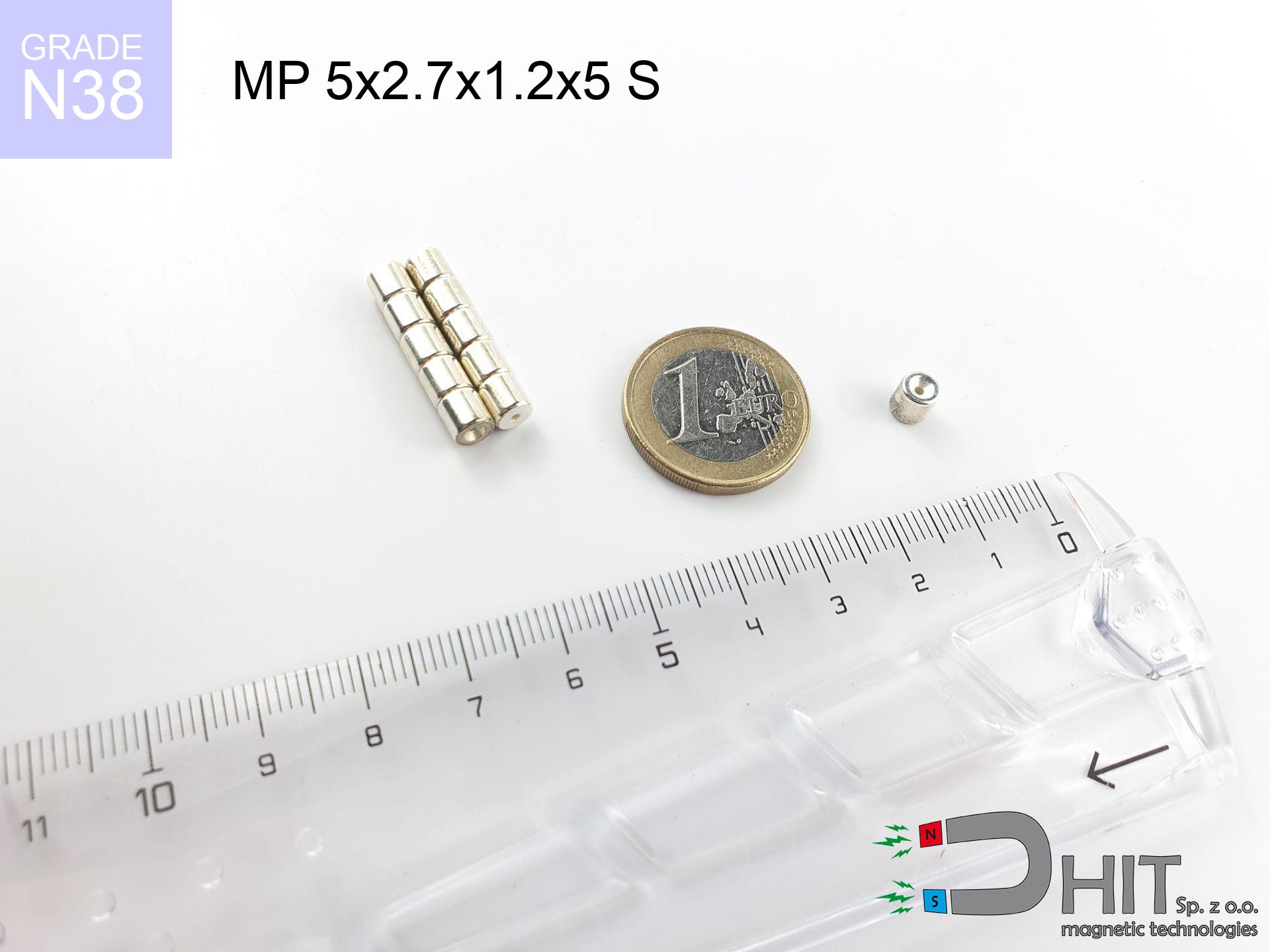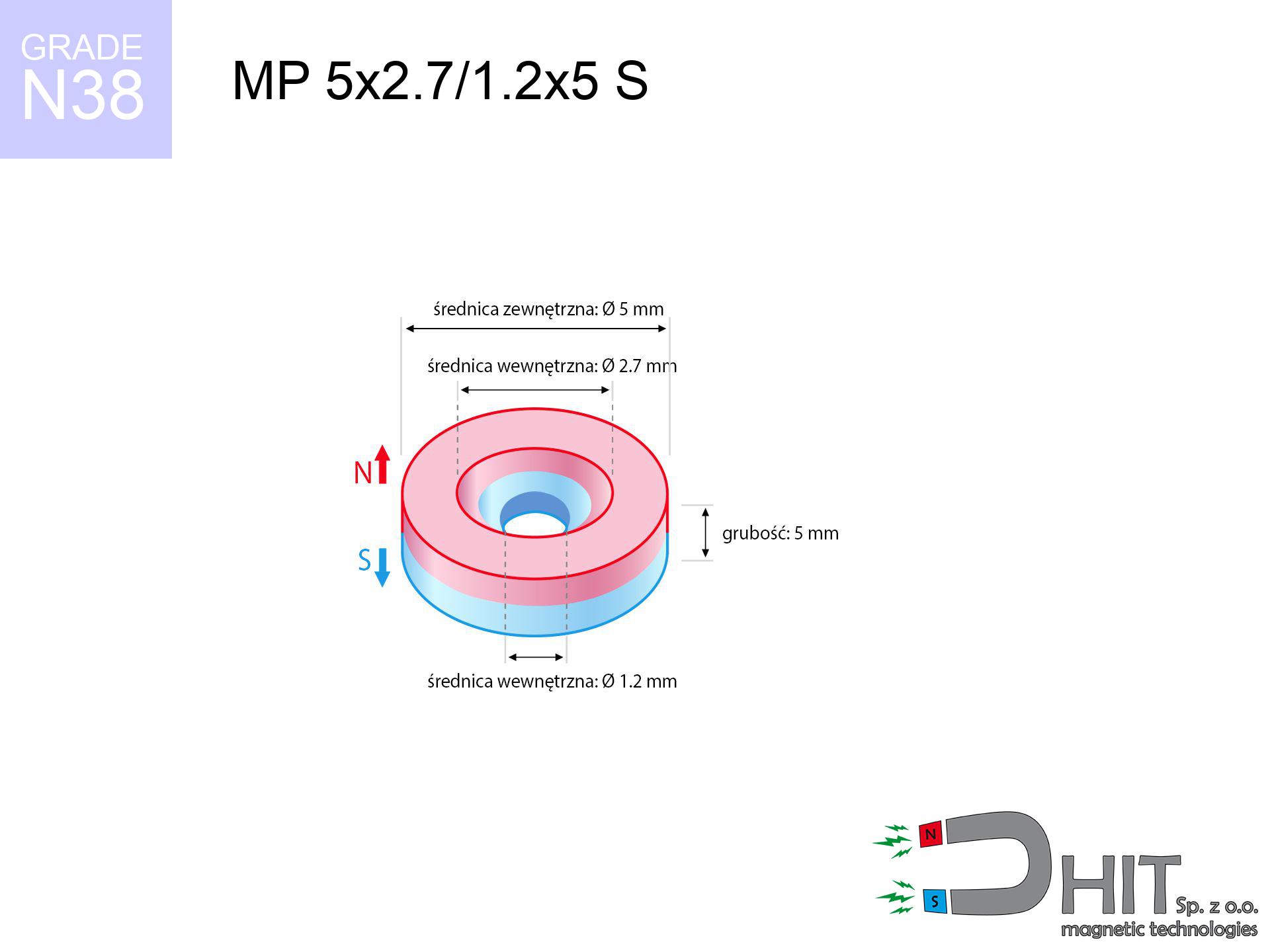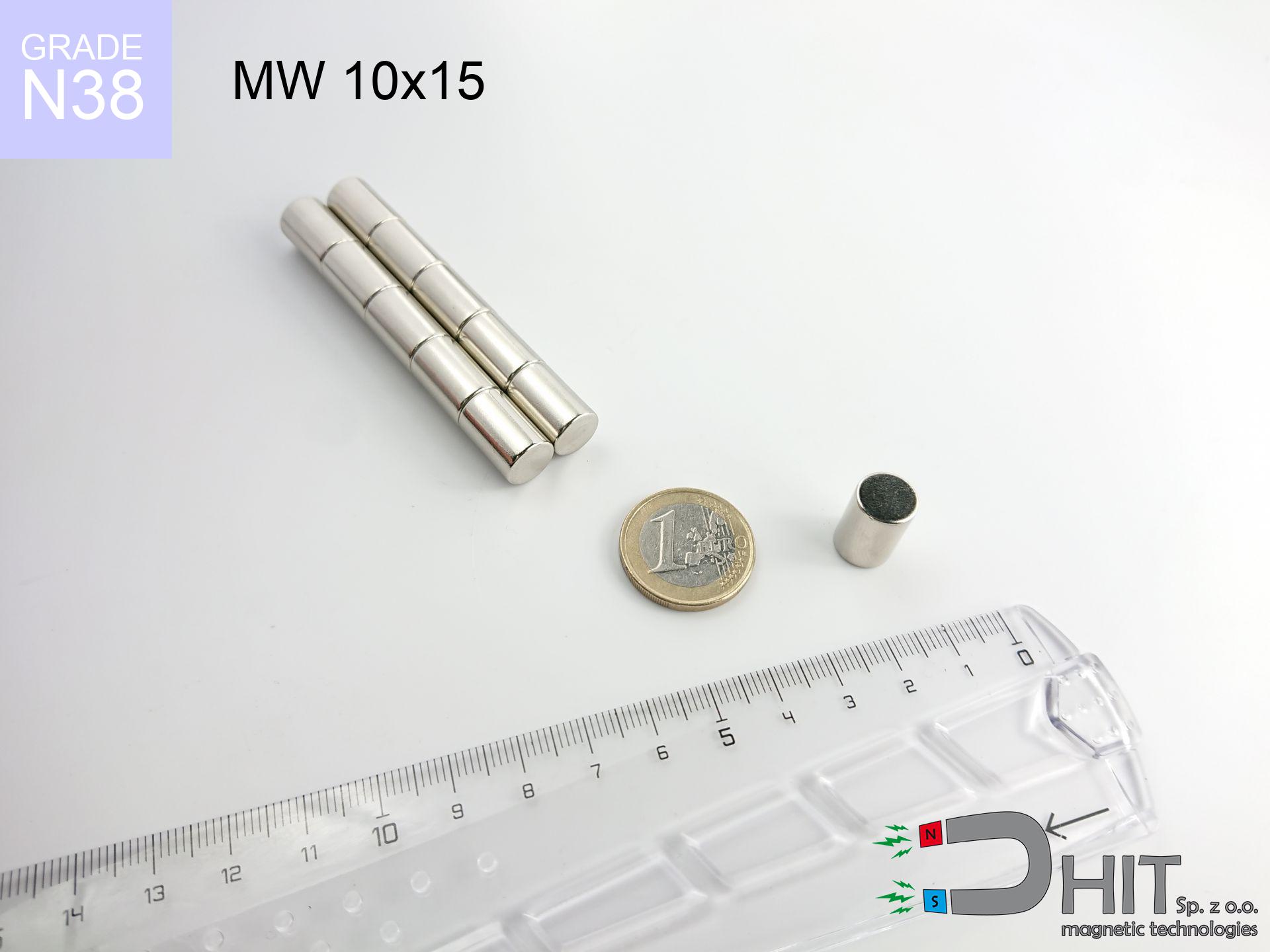MP 5x2.7/1.2x5 S / N38 - ring magnet
ring magnet
Catalog no 030202
GTIN: 5906301812197
Diameter
5 mm [±0,1 mm]
internal diameter Ø
2.7/1.2 mm [±0,1 mm]
Height
5 mm [±0,1 mm]
Weight
3.59 g
Magnetization Direction
↑ axial
Load capacity
0.56 kg / 5.49 N
Magnetic Induction
56.04 mT
Coating
[NiCuNi] nickel
0.836 ZŁ with VAT / pcs + price for transport
0.680 ZŁ net + 23% VAT / pcs
bulk discounts:
Need more?Want to talk magnets?
Contact us by phone
+48 888 99 98 98
or drop us a message via
request form
the contact page.
Lifting power along with shape of magnetic components can be calculated using our
power calculator.
Orders placed before 14:00 will be shipped the same business day.
Magnetic properties of material N38
Physical properties of sintered neodymium magnets Nd2Fe14B at 20°C
Shopping tips
Strengths as well as weaknesses of rare earth magnets.
In addition to their pulling strength, neodymium magnets provide the following advantages:
- They have stable power, and over nearly ten years their performance decreases symbolically – ~1% (in testing),
- They do not lose their magnetic properties even under strong external field,
- A magnet with a shiny nickel surface is more attractive,
- They feature high magnetic induction at the operating surface, making them more effective,
- Due to their durability and thermal resistance, neodymium magnets are capable of operate (depending on the shape) even at high temperatures reaching 230°C or more...
- Possibility of custom modeling and optimizing to defined conditions,
- Key role in high-tech industry – they are utilized in magnetic memories, electric drive systems, advanced medical instruments, and other advanced devices.
- Compactness – despite small sizes they provide effective action, making them ideal for precision applications
Disadvantages of neodymium magnets:
- They are prone to damage upon too strong impacts. To avoid cracks, it is worth securing magnets using a steel holder. Such protection not only shields the magnet but also improves its resistance to damage
- Neodymium magnets demagnetize when exposed to high temperatures. After reaching 80°C, many of them experience permanent drop of strength (a factor is the shape as well as dimensions of the magnet). We offer magnets specially adapted to work at temperatures up to 230°C marked [AH], which are very resistant to heat
- Magnets exposed to a humid environment can corrode. Therefore while using outdoors, we advise using water-impermeable magnets made of rubber, plastic or other material protecting against moisture
- Due to limitations in creating nuts and complicated shapes in magnets, we recommend using casing - magnetic holder.
- Potential hazard resulting from small fragments of magnets pose a threat, when accidentally swallowed, which becomes key in the context of child safety. Additionally, tiny parts of these products can disrupt the diagnostic process medical after entering the body.
- With large orders the cost of neodymium magnets can be a barrier,
Magnetic strength at its maximum – what affects it?
Breakaway force is the result of a measurement for optimal configuration, assuming:
- on a block made of structural steel, perfectly concentrating the magnetic flux
- whose transverse dimension is min. 10 mm
- with an ideally smooth contact surface
- with zero gap (no impurities)
- for force applied at a right angle (pull-off, not shear)
- at ambient temperature room level
Lifting capacity in practice – influencing factors
Real force is influenced by specific conditions, including (from priority):
- Clearance – existence of any layer (rust, tape, gap) interrupts the magnetic circuit, which reduces capacity rapidly (even by 50% at 0.5 mm).
- Force direction – remember that the magnet holds strongest perpendicularly. Under shear forces, the holding force drops significantly, often to levels of 20-30% of the nominal value.
- Base massiveness – insufficiently thick plate does not accept the full field, causing part of the flux to be escaped into the air.
- Steel grade – ideal substrate is high-permeability steel. Cast iron may have worse magnetic properties.
- Base smoothness – the more even the surface, the better the adhesion and stronger the hold. Roughness creates an air distance.
- Thermal factor – high temperature weakens magnetic field. Exceeding the limit temperature can permanently damage the magnet.
* Lifting capacity testing was performed on a smooth plate of suitable thickness, under perpendicular forces, whereas under shearing force the holding force is lower. Moreover, even a minimal clearance {between} the magnet’s surface and the plate lowers the load capacity.
H&S for magnets
Conscious usage
Handle with care. Rare earth magnets act from a distance and connect with huge force, often faster than you can react.
Warning for heart patients
Warning for patients: Strong magnetic fields affect medical devices. Keep at least 30 cm distance or request help to handle the magnets.
Risk of cracking
Watch out for shards. Magnets can explode upon violent connection, launching sharp fragments into the air. Wear goggles.
Serious injuries
Watch your fingers. Two large magnets will snap together immediately with a force of several hundred kilograms, destroying anything in their path. Be careful!
Swallowing risk
Always keep magnets out of reach of children. Risk of swallowing is significant, and the effects of magnets connecting inside the body are tragic.
Thermal limits
Avoid heat. Neodymium magnets are sensitive to heat. If you require operation above 80°C, inquire about HT versions (H, SH, UH).
Mechanical processing
Fire warning: Neodymium dust is highly flammable. Do not process magnets in home conditions as this may cause fire.
Keep away from computers
Avoid bringing magnets near a purse, computer, or TV. The magnetism can permanently damage these devices and wipe information from cards.
Skin irritation risks
Studies show that nickel (the usual finish) is a strong allergen. If you have an allergy, prevent direct skin contact or choose versions in plastic housing.
Phone sensors
GPS units and mobile phones are extremely sensitive to magnetism. Direct contact with a powerful NdFeB magnet can decalibrate the sensors in your phone.
Warning!
Learn more about hazards in the article: Magnet Safety Guide.




![HH 42x8.8 [M6] / N38 - through hole magnetic holder HH 42x8.8 [M6] / N38 - through hole magnetic holder](https://cdn3.dhit.pl/graphics/products/hh-42x8.8-m6-hin.jpg)
![UMGGZ 88x8.5 [M8] GZ / N38 - rubber magnetic holder external thread UMGGZ 88x8.5 [M8] GZ / N38 - rubber magnetic holder external thread](https://cdn3.dhit.pl/graphics/products/umg-88x8.5-m8-gz-waf.jpg)
![SM 32x425 [2xM8] / N52 - magnetic separator SM 32x425 [2xM8] / N52 - magnetic separator](https://cdn3.dhit.pl/graphics/products/sm-32x425-2xm8-tas.jpg)


